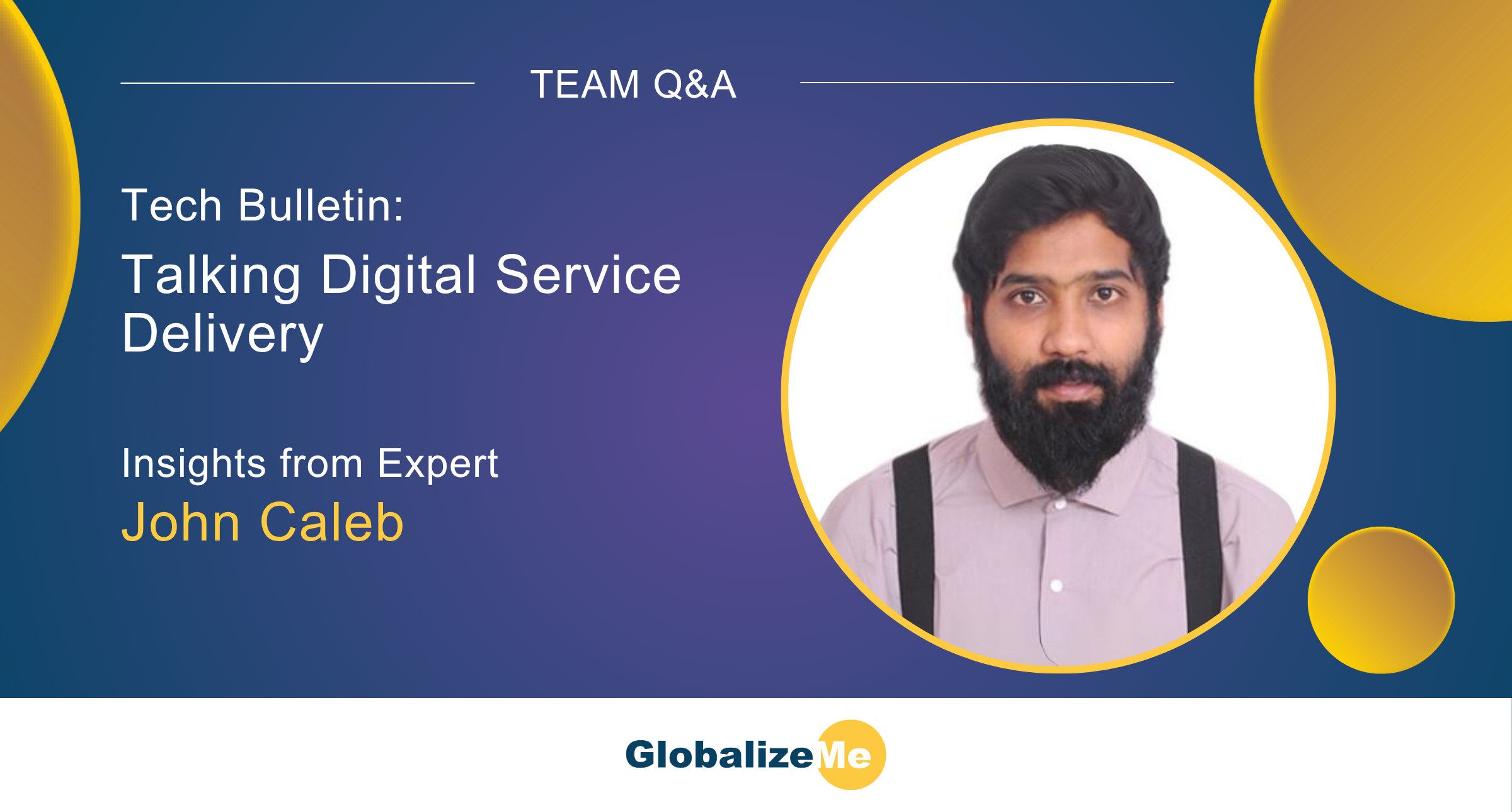This time on Tech Bulletin, we caught up with John Caleb (JC) from our Tech Team to talk all things digital service delivery. What it means, why it matters, and how we can all do it a bit better. From user experience to uptime, we dig into the thinking behind the work that often happens quietly in the background.
Q: John, “digital service delivery” sounds a bit jargon-y. What does it actually mean day-to-day?
You’re right, it’s one of those phrases that can sound more complicated than it needs to be. Really, it’s about making sure the digital services people rely on – apps, websites, systems – actually work for them. That they’re reliable, easy to use, secure, and designed with the user in mind. It’s everything behind the scenes that keeps the digital wheels turning.
Q: So once a platform or app goes live, job done?
Not quite. That’s just the beginning. Things change constantly, users expect more, technology shifts, bugs crop up, and security threats evolve. If you’re not actively maintaining and monitoring your services, they’ll start to creak pretty quickly. We put a lot of effort into making sure things stay smooth, stable, and up-to-date.
Q: Where do you start when you’re building a new service or system?
We always start with the people who’ll be using it. That might mean digging into analytics, mapping out the user journey, or just listening to feedback. Once we understand what users actually need, not just what we think they need, we design with clarity and simplicity in mind. The best digital services often feel invisible, because they just work.
Q: How does Agile fit into that process?
Agile is a big part of how we work. Instead of doing everything up front, we work in small chunks, test things out, get feedback, and improve as we go. It keeps us flexible and stops us getting stuck on the wrong path for too long. It’s not always perfect, but it means we’re learning as we build, and that’s hugely valuable.
Q: You mentioned “smooth and stable” earlier, how do you make that happen?
Automation plays a big role. We try to automate anything repetitive or error-prone, whether that’s code deployment, monitoring, or security checks. That frees up our time to focus on solving actual problems, not chasing our tails with manual tasks. It also helps keep things consistent and reduces the chances of human error.
Q: Security must be a constant concern too, right?
Absolutely. We don’t treat security as something you tack on at the end, it’s baked in from the start. We follow good practices, we test, we audit. It’s about building trust with users. If they don’t feel safe using your service, nothing else really matters.
Q: What do you think makes a strong digital delivery team?
A few things. Good communication, clear goals, and a culture that supports experimenting and learning. Also, leadership that understands digital isn’t just an “IT thing”, it’s part of the whole organisation’s strategy. And measuring the right things such as uptime, user satisfaction, and how quickly issues get fixed, really helps teams focus.
Q: How do you keep up with how fast everything changes?
It’s definitely a challenge. We try to keep curious, reading, testing, staying aware of new tools or trends, but without chasing every shiny new thing. It’s more about staying adaptable than trying to predict the future. If your team’s open to change and not afraid to ask questions, you’ll usually be alright.
Q: Final thoughts? Anything you think often gets overlooked?
Probably that digital service delivery is never “done.” It’s ongoing – and that’s a good thing. It means there’s always room to improve, to respond to what users are telling you, and to deliver something better. When people say, “This just works,” that’s when you know you’re doing it right.
If you have any questions about digital service delivery, don’t hesitate to get in touch. And if you’d like to hear more insights from the experts at GlobalizeMe, stay tuned for the next edition of our Tech Bulletin.

